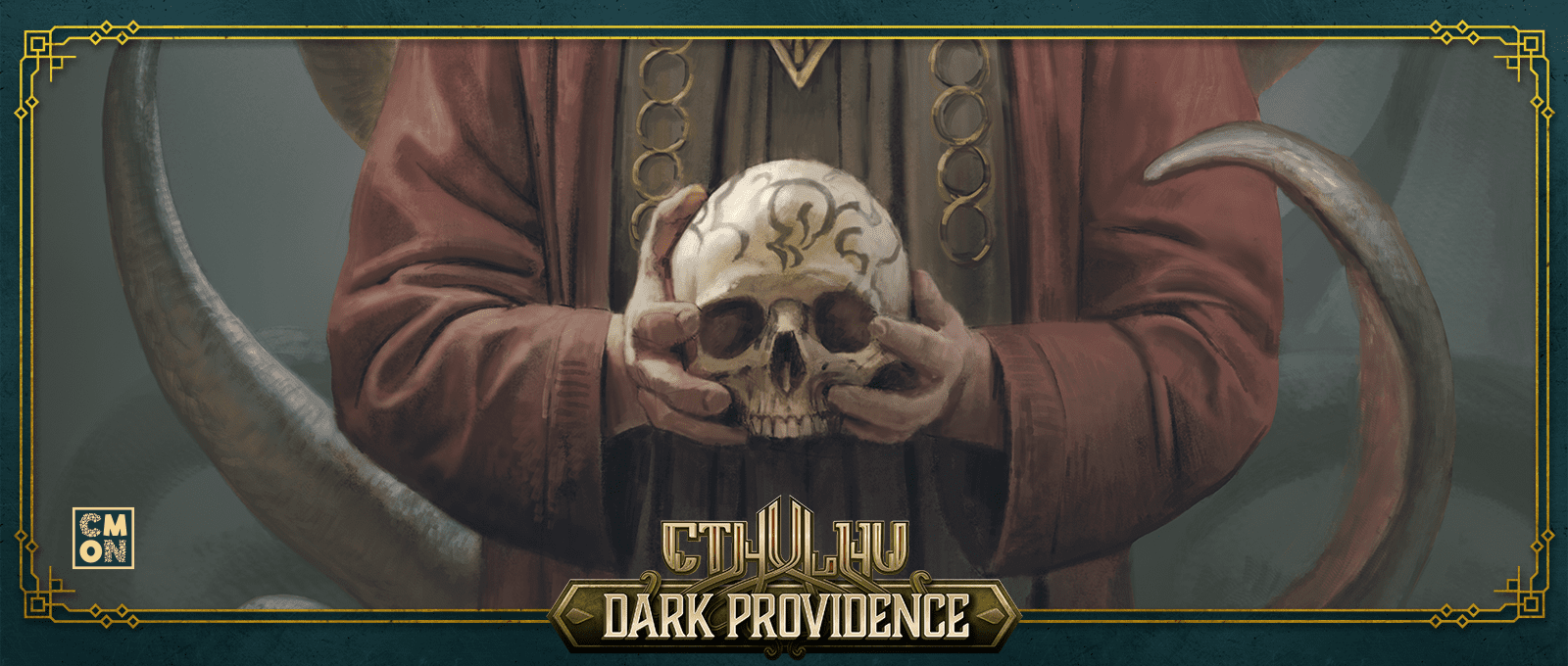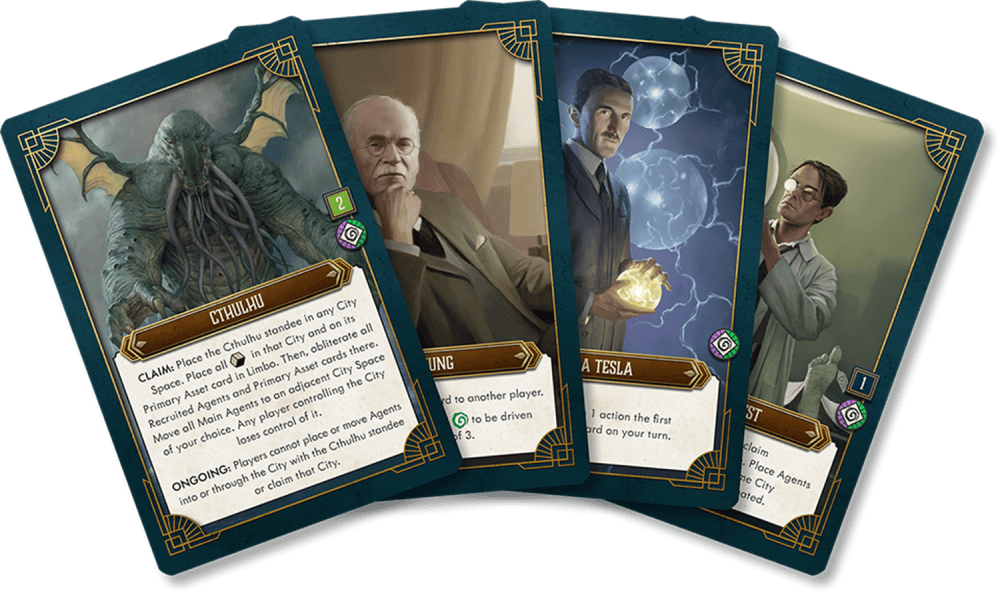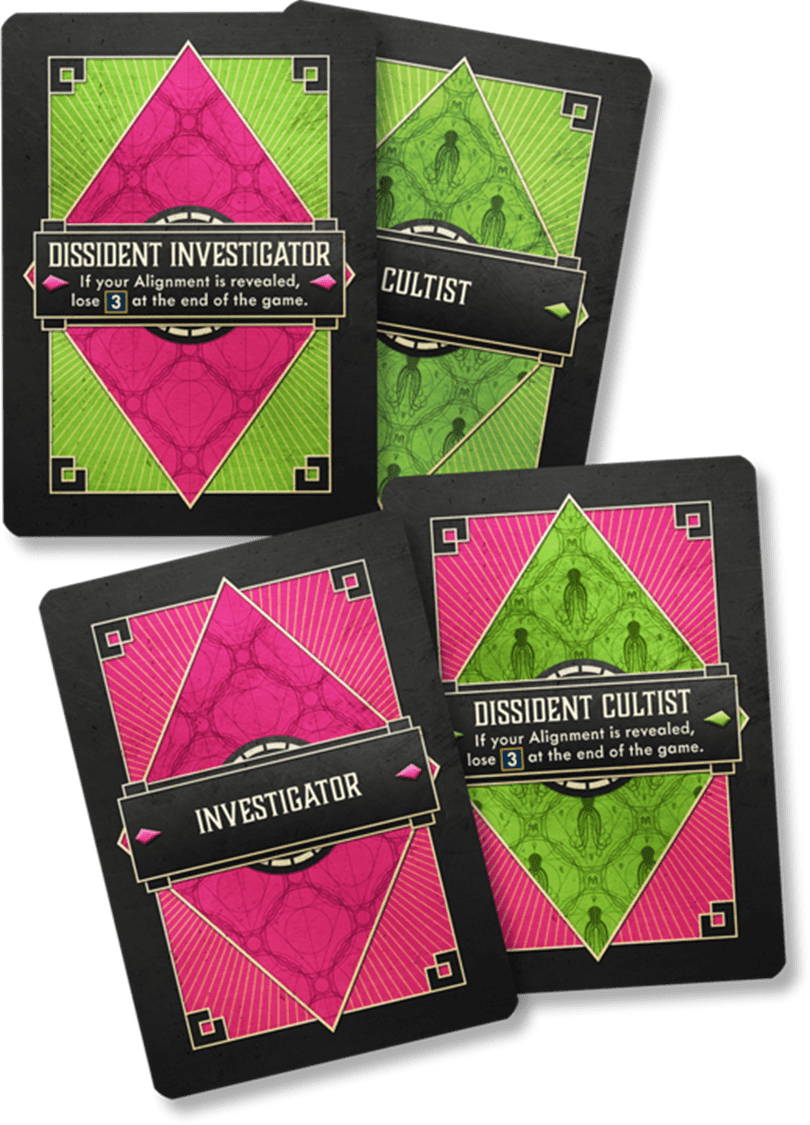
Cthulhu: Dark Providence Diary #1 – Dark Designs
Travis Chance, one of the lead designers on Cthulhu: Dark Providence, gives some insight on his design process and overall philosophy on his fresh take of A Study in Emerald.
Hey, all! Travis here: one of the senior designers over at CMON and the co-designer on Cthulhu: Dark Providence–the other of which is the insanely talented Martin Wallace! Martin designed and published a game many of ya’ll may have heard of way back in 2013 called ‘A Study in Emerald.’ Dark Providence is a new take on that game system set in the world of Cthulhu: Death May Die. And I can’t wait to tell everyone all about it!
Since the first time I played it in 2014, Study has been one of my very favorite games of all time. It’s beyond creative. It’s beyond audacious. Each session was memorable and packed with theme. Even ten years later, I haven’t quite seen or played a game like it. It’s a deck-builder (with a board) where there are no printed costs on the cards you acquire. It’s a hidden identity game focused on factions, but there’s only ever one winner. There are cards in the game with so much flavor and impact that their text boxes cannot contain all that they are intended to do. A player can be driven to the brink of Lovecraftian insanity, yet still win the game. There’s a smidge of area control, a dash of engine-building, and a lot of multi-use cards. It’s a sandbox of cosmic horror and historical and literary references that has been out of print for quite some time.
But Dark Providence is not about a reprint. It’s an opportunity to take a decade of community feedback and reflections from Martin and apply them to something new. We wanted to improve where possible: make the game hum at lower player counts (including a solo game module), deepen the suspicion and suspense, as well as simplifying rules where possible. We also wanted to steer into the skid of the design: doubling the Mythos card count, providing players with more means to score individual points, and increasing the power level of agents and other cards. Lastly, we wanted to explore a different and darker angle of the world of Death May Die, weaving it together with historical figures and locales in early 20th Century America.

In this diary, I wanted to talk about one of my very favorite parts of this design: alignments. In Dark Providence, players have identical starting positions: one main agent on the map, same starting deck, some amount of influence, etc. However, each player is dealt a secret alignment card from six possible cards. Their alignment card determines if they are an investigator, cultist, or dissident—there are 2 copies of these three possible alignments. Each alignment determines how players will score points at the end of the game, as well as providing some asymmetrical advantages.

Investigators want to stop the Elder Gods and the covert machinations of the cultists. They have a strong network of allies in the form of recruitable agents that will score them points… if those agents survive.
They also have more access to interact with gates (sealing them) and more means to advance their investigation track.
Cultists are the disciples of the Elder Gods. They are rewarded for assassinating agents—even other cultist agents. After the last card is taken or obliterated in each of the 12 cities, their ritual track advances. They also do not trigger the game end when they are driven insane as they are well-accustomed to the otherworldly horrors they serve.
Lastly, there are dissidents, one investigator, one cultist. Think of them as individuals that have ties to the other alignments but are largely out for themselves. They score the respective investigation or ritual track on their alignment card, but do not gain most of the other special scoring exceptions that come with being a cultist or investigator. A dissident’s primary strength is in being versatile. They can score for both sealing AND protecting gates. Like a cultist, they score for each agent they have assassinated. This makes it very difficult to pin down as to which side they might be on.
Why does all of this matter, you might be asking yourself? Because, at the end of the game, before determining a winner, the player with lowest score is eliminated… as well as any other player with the same alignment—regardless of their score. That’s right, if the lowest scoring player is an investigator, any other investigator player is also eliminated, even if they were winning. Of the remaining players, only the one with the highest score will win the game. And this is the last perk of being the newly added dissident alignment. Each dissident is a free agent and is immune to scoring elimination! However, if their alignment card is revealed from being driven to insanity, they will lose 3 points.
This scoring elimination adds a lot of tension to the game. Players want to pursue strategies without being overly obvious. Cultists want to sniff out investigators to kill of their agents. Investigators must carefully navigate sanity tests to trigger the game end at the right moment, if at all. And dissidents want to convince or confuse other players about their aims. It’s important to know who else is on your side, if anyone. The investigation and ritual tracks are shared points, including the dissidents, and the best means to pull up the score of a player that might cause you to lose.
That’s all for this diary. Next time I will be digging into the deck-building of the game!
Available for pre-order TODAY at: https://cmon.co/dark-providence
Player Support
Need Assistance? Click here to reach our dedicated Customer Support team for help with your order, address changes, refunds, or parts replacements.